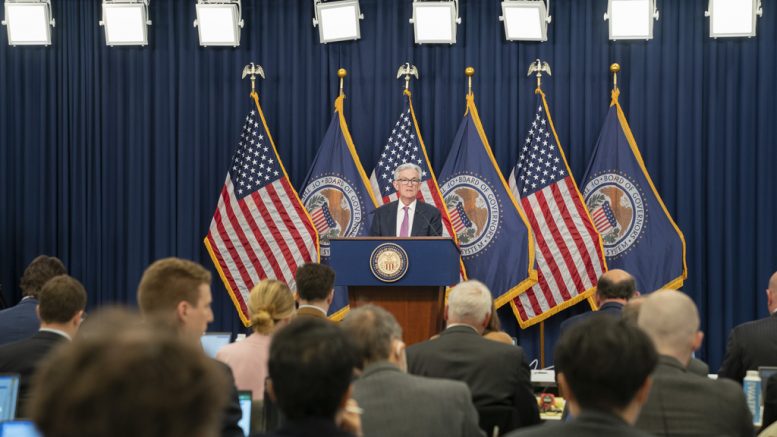WASHINGTON (AP) — The Federal Reserve is grappling with a hazier economic picture clouded by turmoil in the banking industry and still-high inflation just as it meets to decide whether to keep raising interest rates or declare a pause.
Yet the Fed will not only have to decide whether to extend its year-long streak of rate hikes despite the jitters roiling the financial industry. The policymakers will also try to peer into the future and forecast the likely path of growth, employment, inflation and their own interest rates.
Those forecasts will be released Wednesday, when most economists expect the Fed to announce a relatively modest quarter-point hike in its benchmark rate, its ninth hike since March of last year.
The projections this time will be particularly difficult. In their most recent forecasts in December, Fed officials projected that they would raise their short-term rate to about 5.1%, roughly a half-point above the current level. Some Fed watchers expect the policymakers on Wednesday to raise that forecast to 5.3%.
But the upheaval in the banking industry has made any expectations far less certain. The Fed is meeting less than two weeks after Silicon Valley Bank failed in the second-largest bank collapse in American history. That shock was followed by the failure of another major bank, Signature Bank. A third, First Republic Bank, was saved from collapse by a $30 billion cash infusion.
Given the heightened uncertainties overhanging the financial system, there’s a small chance that the Fed could decide not to issue its usual quarterly projections. Three years ago, when the pandemic struck, the Fed moved up a scheduled policy meeting to a Sunday, rather than on Tuesday and Wednesday, to urgently address the economic anxieties caused by new pandemic restrictions. After that meeting, the Fed didn’t release any quarterly projections.
At the time, Powell said that issuing economic and interest rate forecasts, when the consequences of the COVID-19 pandemic were so unclear, “could have been more of an obstacle to clear communication than a help.” Still, the unusual decision then was as much a reflection of the chaos of the early pandemic as it was of the uncertain outlook.
If the Fed does raise its key rate by a quarter-point on Wednesday, it would reach roughly 4.9%, the highest point in nearly 16 years. Early this month, Powell had said in congressional testimony that a half-point rate increase would be possible at this week’s meeting. The banking crisis has suddenly upended that outlook.
It will be a tough call for the 11 Fed officials who will vote on the rate decision. With hiring still strong, consumers still spending and inflation still elevated, a rate hike would normally be a straightforward move.
Not this time. The Fed is expected to treat inflation and financial turmoil as two separate problems, to be managed simultaneously by separate tools: Higher rates to address inflation and greater Fed lending to banks to calm financial turmoil.
Complicating matters will be the difficulty in determining the impact on the economy of the collapse of Silicon Valley and Signature. The Fed, Federal Deposit Insurance Corp., and Treasury Department agreed to insure all the deposits at those banks, including those above the $250,000 cap. The Fed also created a new lending program to ensure that banks can access cash to repay depositors, if needed.
But economists warn that many mid-sized and small banks, in order to conserve capital, will likely become more cautious in their lending. A tightening of bank credit could, in turn, reduce business spending on new software, equipment and buildings. It could also make it harder for consumers to obtain auto or other loans.
Some economists worry that such a slowdown in lending could be enough to tip the economy into recession. Wall Street traders are betting that a weaker economy will force the Fed to start cutting rates this summer. Futures markets have priced in three quarter-point cuts by the end of the year.
The Fed would likely welcome slower growth, which would help cool inflation. But few economists are sure what the effects would be of a pullback in bank lending.
Most recent data still points to a solid economy and rampant hiring. Employers added a robust 311,000 jobs in February, the government said earlier this month. And while the unemployment rate rose, from 3.4% to a still-low 3.6%, that mostly reflected an influx of new job-seekers who were not immediately hired.
Consumer spending was robust in January, fueled in part by a large cost-of-living adjustment for 70 million recipients of Social Security and other benefits. The Federal Reserve Bank of Atlanta projects that the economy will have expanded at a healthy annual rate of 3.2% in the first three months of this year.








































